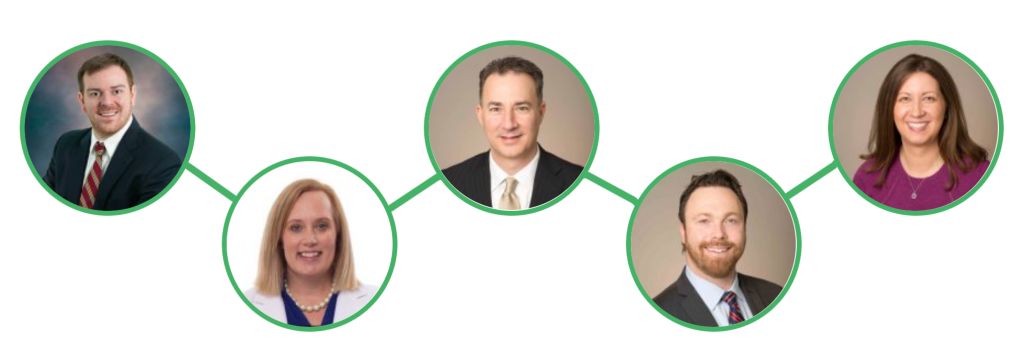Washington, D.C. — Like so many organizations across the country, GoRail had to adapt in the face of the pandemic. Unable to rely on in-person meetings—the bread-and-butter of organizing and building relationships—the GoRail team made the most of both new tools and tried-and-true tactics to connect with local leaders in communities across the country.
And despite obstacles, GoRail’s field team had remarkable achievements in 2020, including recruiting more than 1,000 local leaders to sign the Staggers anniversary letter in under 10 months.
Here, our state directors reflect on the changed landscape and what it’s like to work in grassroots advocacy during a pandemic. While we look forward to a return to the in-person connections that can’t be replaced—here’s a look at how we’ve made the most of virtual organizing.

How has the pandemic changed the substance of organizing during your meetings?
Nate Kaplan: The pandemic was the elephant in the room. It was impossible to have a conversation without mentioning the pandemic if even for just a moment of empathy.
Brett Sebastian: The “realization” by stakeholders that the railroads are important and not just operating in the background helped highlight the economic impact of the railroads – and perhaps made it easier for our economic issues to be heard so we can keep the system economically healthy and operating.
Michael Gaynor: The lack of essential supplies in the early days of the pandemic definitely brought home to everyone how logistics impacts our daily lives. This certainly set the stage for opening meetings in a manner that highlighted rail’s role in supporting the economy and that rail workers are heroes ensuring families have what they need.
Talk about one of your best virtual meetings or presentations.
Michael: Presenting to the NACo Transportation Committee was the most rewarding and productive virtual meeting of the year. The Association represents near 40,000 local elected officials—securing their support opened the door to productive local conversations across the nation.
Christy Sammon: My presentation to the Georgia Freight and Logistics Commission in October 2020 comes to mind. I discussed the Staggers Act and need for continued balanced regulation with an audience of about 60. We also touched on the benefits of moving freight by rail rather than Georgia roads. In the Commission’s final report, they recommended $1 billion dollars for rail and road improvements.
Nate: My favorite was a post-election analysis for the New England Railroad Club. As an executive board member, I was asked to give the keynote speech to approximately 50 participants for the Club’s annual executive luncheon. It felt like I was finally presenting in front of a large group again, one of my favorite parts of this job. Nothing beats speaking before a live audience, but I “had the mic” for 50 minutes to talk politics and transportation policy, plus there were very thoughtful questions at the end.
What’s one of your most memorable virtual moments?
Emily Traiforos: One of my first video calls was with Patrick Sherry [Director of the National Center for Intermodal Transportation] on Zoom. He had a beautiful bookcase behind him. I told him how impressed I was with his office—and then he transported himself to an Irish pub, followed by San Francisco. Then he turned off the background and showed me the green sheet he had set up behind him. How disillusioning!
Nate: Usually, presenting in front of groups a favorite part of my job. With video calls, though, it’s really hard to tell if my “dad jokes” land.
What do you see as the biggest upside of virtual organizing?
Michael: While our total meeting numbers as an organization were similar to previous years, the scope of our reach was greatly expanded with virtual organizing. Instead of being tethered to a fixed geographic point, each of us was able to conduct meetings in multiple states and districts in the same day. This also gave us the ability to build momentum with specific audiences. We could meet with one port authority in the morning, for example, and then build on the information gleaned in that conversation in a meeting with a port in another state later the same day.
Nate: The virtual organizing strategy seems to work especially well for casting a wide net on issues like our Staggers anniversary letter. I was able to meet with local leaders in geographic areas impossible to travel to within a given week, the usual time designated for a site visit. For instance, I could “travel” across Washington state with the click of a button.
Emily: You can definitely reach people without the travel costs associated, but I don’t think that is necessarily better or easier. I think it’s important to see the district and get a feel for it, especially for new territory. It makes you more credible and helps to build connections with the folks you’re meeting with.
What do you miss most about being on the road?
Nate: First, I’m grateful that our organization recognized the risks associated with travel early on. However, exploring new parts of my territory or revisiting cities and rural communities that I fell in love with in previous site visits is one of the best parts of this job. Being on the road gives a state director a better understanding of the communities and leaders we’re engaging.
Emily: Seeing other places, exploring, getting the vibe of a district. Eating at fun restaurants.
Michael: In person meetings, meeting new people, exploring new communities, and learning about local projects. Peace and quiet that comes with the solitude of the road.
Brett: It’s fun to be on the road and try new things or visit new places like historic sites.
Christy: It is easier to connect with folks in person, which cannot quite be duplicated through video or a telephone call.


